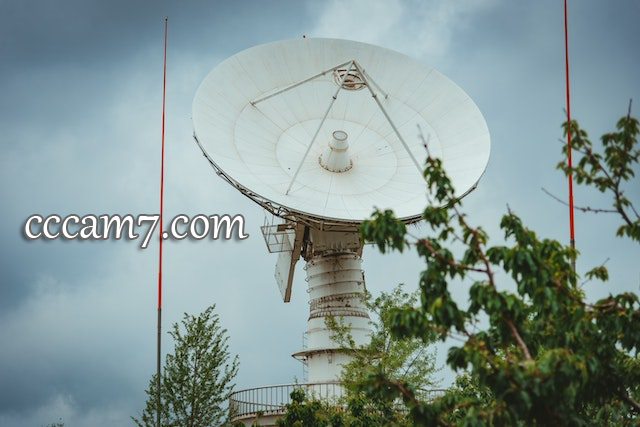Exploring the World of Free Internet TV: Your Guide to Accessing Content Online
Introduction to Internet TV
Internet TV represents a transformative shift in how audiences consume visual media, fundamentally altering the landscape of entertainment. Unlike traditional television services, which rely on cable or satellite connections, Internet TV uses internet connectivity to deliver content. This change allows users to stream movies, shows, and live broadcasts from various devices, providing greater flexibility and control over viewing habits.
The evolution of television has dramatically accelerated with the introduction of digital streaming services. Platforms such as Netflix, Hulu, and Amazon Prime have emerged as key players, fundamentally changing the way content is produced, distributed, and accessed. Through these services, viewers can access an extensive library of titles without the constraints of scheduled programming or geographical limitations. As Internet speeds increase and technology advances, the ability to stream high-quality content continues to evolve, benefiting from innovations like adaptive streaming and enhanced user interfaces.
Furthermore, the global reach of high-speed internet has made it possible for audiences to enjoy content beyond typical regional limitations. This shift has opened up a multitude of viewing possibilities for users, including access to international programming that was previously challenging to obtain. The impact of internet connectivity on content accessibility cannot be overstated, as it enables a diverse range of options tailored to individual preferences and tastes. This democratization of content allows viewers to curate their entertainment experience, from classic films to the latest series.
With the increasing demand for flexible viewing options, the concept of free Internet TV has gained traction, presenting an array of opportunities for viewers to access content without financial barriers. The following sections will delve deeper into the various free Internet TV offerings that are transforming how audiences engage with visual entertainment.
Popular Platforms for Free Internet TV
The landscape of free Internet TV is expanding rapidly, with numerous platforms emerging to cater to viewers looking for cost-effective entertainment options. Among the most notable is Crackle, which offers a diverse library of movies and TV series, including classic and contemporary titles. The platform is accessible via web browsers and mobile applications, ensuring viewers can enjoy content on various devices. Crackle also features original programming, which adds distinctive value to its offering.
Tubi stands out as another popular platform for free Internet TV, boasting an extensive catalog of films and television shows across different genres, such as action, comedy, and drama. Tubi stands out due to its user-friendly interface and personalized recommendations, which enhance the viewing experience. Importantly, this service does not require viewers to create an account, making it particularly appealing for those seeking immediate access to entertainment without any commitments.
Pluto TV is a unique player in this space, operating primarily as a live TV streaming service that mimics the traditional cable experience. It offers viewers access to hundreds of channels featuring news, sports, movies, and series. With its innovative channel lineup and on-demand options, Pluto TV caters to audiences seeking both live broadcasts and a vast array of recorded content. The platform is available on numerous devices, further enriching the accessibility of free Internet TV.
Each of these platforms exemplifies the diverse approaches to free Internet TV, accommodating various viewing preferences and enhancing accessibility. From Crackle’s original series to Tubi’s expanding library and Pluto TV’s live channels, there are countless options for viewers looking to explore content online at no cost.
Accessing Free Internet TV: Devices and Connectivity
With the introduction of various technological advancements, accessing free Internet TV has never been easier. A myriad of devices and connectivity options are available, allowing viewers to enjoy a vast array of content seamlessly. One of the most popular devices for streaming is the smart TV. These televisions come equipped with built-in applications that grant access to numerous free streaming services without the need for additional hardware.
Another highly favored option is the use of dedicated streaming devices, such as Roku and Amazon Fire Stick. These compact devices can be plugged into an HDMI port on any standard television, transforming it into a smart TV. Users can install various free Internet TV applications, enabling them to watch shows and movies from multiple platforms. Additionally, devices like Google Chromecast allow users to cast content directly from their smartphones or tablets to their televisions, enhancing convenience.
Mobile applications available for smartphones and tablets have also contributed significantly to the accessibility of free Internet TV. These apps allow viewers to stream content on-the-go, making it easy to enjoy their favorite shows during commutes or while traveling. Major networks and platforms often offer mobile versions of their services, granting users mobility without compromising their viewing experience.
For those who prefer traditional desktop or laptop experiences, web browsers remain a viable option for accessing free Internet TV. Many streaming services provide browser-based platforms, making it easy for users to navigate and watch their desired content directly from their computers. This option is particularly advantageous for individuals with larger screens or who enjoy the enhanced interaction that a keyboard and mouse provide.
Moreover, optimizing internet connectivity is essential for achieving the best streaming quality. Ensuring a stable and high-speed internet connection can mitigate buffering issues and enhance the overall viewing experience. Simple measures such as placing routers in strategic locations or utilizing Ethernet connections can greatly improve streaming performance. By leveraging the right devices and methods of connectivity, viewers can fully enjoy the extensive offerings of free Internet TV.
Legal Considerations and Safety Tips for Watching Free Internet TV
As the popularity of free Internet TV continues to rise, it becomes increasingly important to acknowledge the legal ramifications associated with online streaming. While many platforms offer accessible content without charge, not all of these sources are operating within the boundaries of copyright law. It is essential for viewers to understand that accessing copyrighted material without proper authorization may constitute a violation of intellectual property rights, which could lead to legal repercussions. Therefore, users should ensure that the content they are streaming is legally available, preferably through reputable platforms that have secured the necessary rights.
To navigate these legal waters, it is prudent to familiarize oneself with various laws pertaining to copyright in different jurisdictions. This can help clarify what is considered acceptable behavior when engaging with free Internet TV. Moreover, streaming platforms that provide a selection of films, series, or live events legally will often display disclaimers or licenses, allowing users to verify the legitimacy of the content.
In addition to legal considerations, safety is paramount when accessing free Internet TV. One effective way to enhance safety is by utilizing a reliable Virtual Private Network (VPN). A VPN encrypts your internet traffic, helping to safeguard personal information from prying eyes, especially on public Wi-Fi networks. Furthermore, users should ensure that any websites used for streaming have secure protocols, indicated by URLs starting with “https://” rather than “http://”. This small detail significantly reduces the risk of data breaches and malicious attacks.
Lastly, it is crucial to avoid piracy. Engaging in pirated streaming not only raises legal concerns but also undermines the creators’ rights and efforts. By adopting responsible streaming habits and utilizing proper online tools, viewers can enjoy free Internet TV without compromising their safety or legal standing. In conclusion, being informed about legality and safety can enrich the online viewing experience while protecting users in an increasingly complex digital landscape.

